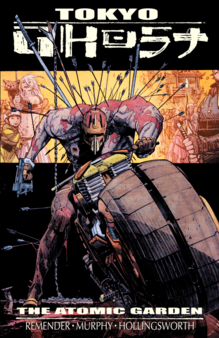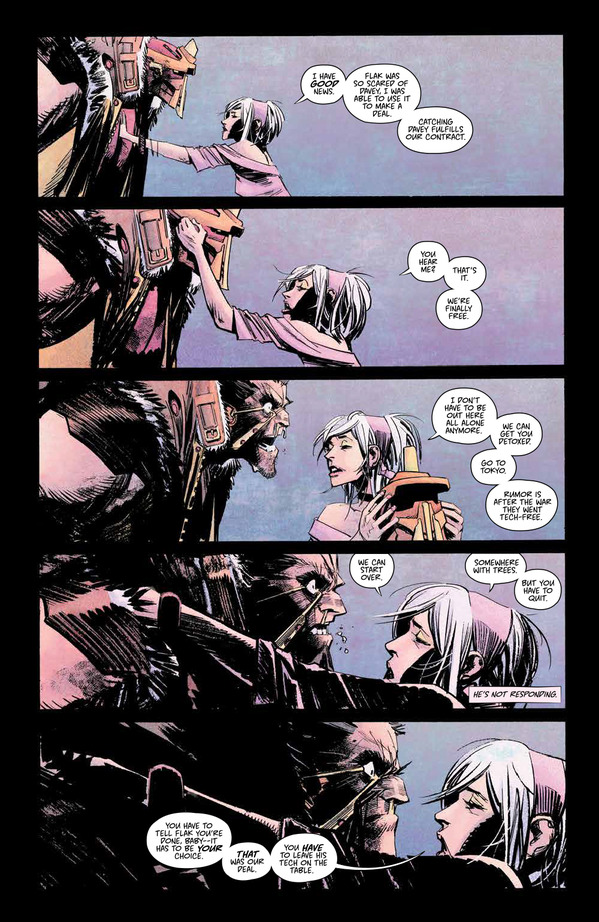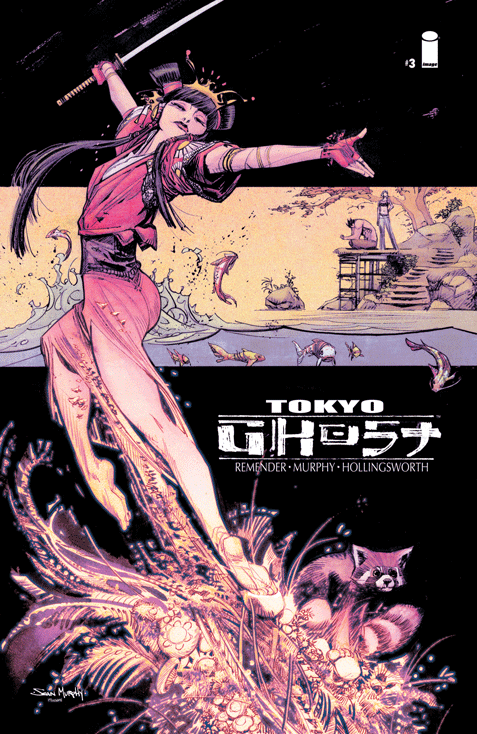State of the Art: Sean Gordon Murphy Crafts Dystopian Sci-Fi Chaos and Jungle Havens in Tokyo Ghost
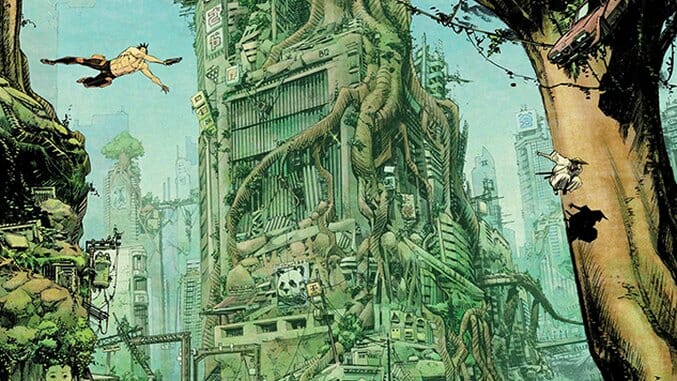
Working alongside a handful of the most innovative writers in comic books, artist Sean Gordon Murphy has created more worlds than a pantheon of pagan gods. After writing and illustrating the 2011 slice-of-life graphic novel Off-Road, Murphy’s first mainstream project was a collaboration with post-modern icon Grant Morrison on Joe the Barbarian, the tale of a boy hero tripping into an ‘80s fantasy homage while suffering from diabetic shock. Other works would see the Brooklyn-based artist tackle post-apocalyptic flood favelas in The Wake with Scott Snyder, and ornate time-travel mischief in Chrononauts with Mark Millar. The only constant between the shifting genres is an obsessive eye for background detail and gorgeously choreographed action sequences. And as he proved on Punk Rock Jesus, Murphy can script careening plot twists as well as conjure devastating set pieces in his take-down of consumerism and organized religion.
That legacy culminates with Tokyo Ghost, a new exploration of technology-induced isolation and harrowing violence written by Rick Remender. Murphy illustrates the trials of constable Led Dent and his lover, Debbie Decay, as they patrol the streets of Los Angeles 2089. A gonzo William Gibson-ish nightmare, the neon-streaked dystopia harbors a population lost in binary dependency, divorced from their emotions and basic biology to receive an endless feed of digital entertainment. When Dent is tasked with hunting a mysterious figure in the tech-less haven of Tokyo, Decay uses it as a new opportunity to purge the couple of their former life.
With its first collection out this week from Image Comics, Tokyo Ghost shows Murphy’s transportive craft at its height. He channels heady ideologies into concussive action ballets (the man loves motorcycle chases) and sweeping vistas. Paste emailed with Murphy to discover his process for forming these intoxicating new landscapes.![]()
Paste: Your work is so dynamic in how it establishes an environment in these sweeping architectural long shots, and then zooms in to show action and intimate character moments. That rhythm takes on a new meaning in Tokyo Ghost; Los Angeles is a world of isolation and autonomy, while Tokyo hosts a communal, agrarian ecosystem. Did location play a role in the rhythm and scope of your storytelling?
Sean Gordon Murphy: Rhythm especially—because comics don’t have sound, rhythm is created by the panels: the size, pattern, volume, etc. While LA is jammed with panels with very little room to breathe (like its citizens), Tokyo has less panels that allow sweeping vistas, atmospheric perspective and a lot more room to breathe. Hopefully readers will feel these decisions even if they’re not consciously aware of them.
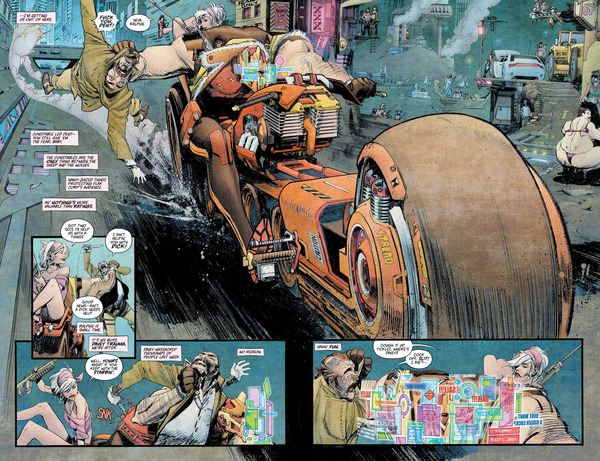
Tokyo Ghost Interior Art by Sean Gordon Murphy
Paste: How did you channel the concepts of technological isolation and organic compassion into your character designs? How were those themes hashed out with colorist Matt Hollingsworth?
Murphy: When Rick and I first planned Tokyo Ghost, it was going to be a basic samurai story. Eventually the entire thing shifted to a cyber-punk love story where we could also inject social commentary. But throughout every conversation, we agreed that the roots of the book would always be samurai, including the set and character designs in Japan.
Matt does a great job with his color technique in this book—the textures you’re seeing are based off Japanese woodblock print using (I think) rice paper. Matt’s been using this look on a few of our books now, and people really seem to enjoy it. Fittingly for Tokyo Ghost, we’re finally able to use it on a book with Japanese elements.
-

-

-

-

-

-

-

-

-

-

-

-

-

-

-

-

-

-

-

-

-

-

-

-

-

-

-

-

-

-

-

-

-

-

-

-

-

-

-

-

